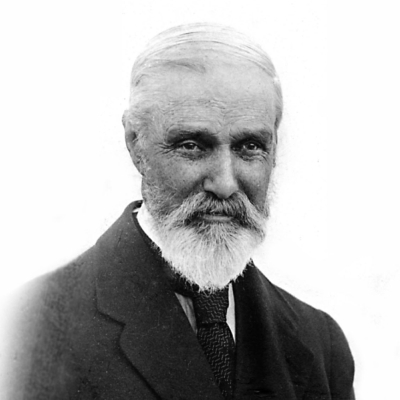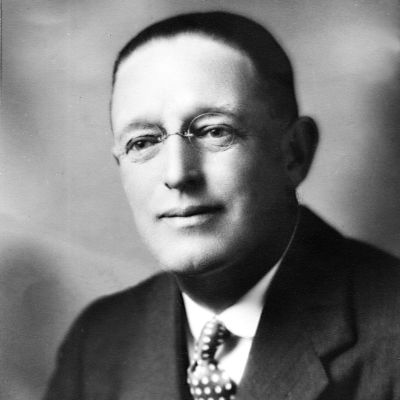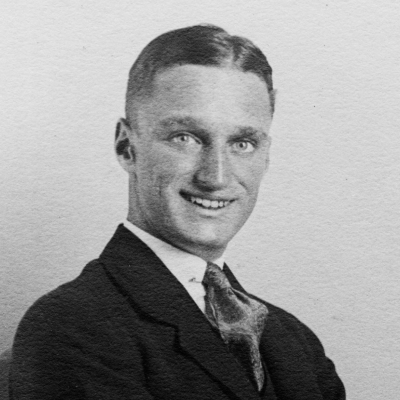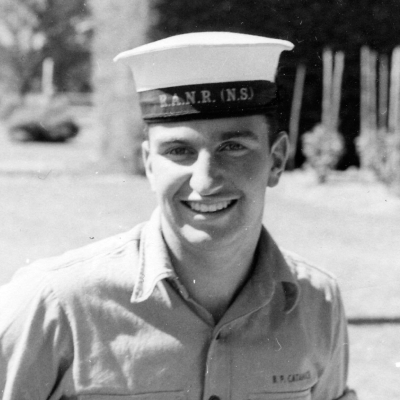Catanach
Amid the backdrop of a burgeoning city, the late 1800s saw
Catanach’s Jewellers journey begin alongside a transformational
period for Marvellous Melbourne. At this time the country of Australia
as we know it did not yet exist and Melbourne was considered just one
British colony in a collection of them located on a vast land known as
New Holland. George Catanach's journey from an ambitious newcomer
to a pioneering jeweller unfolds against a backdrop of remarkable
events that showcased the very best of Melbourne’s growing city.

George Catanach
arrives in Melbourne
It all started aboard HMS Swiftsure when
young George Catanach set sail from
London to Melbourne, Australia. Of
course, it wasn’t known as Australia
then. George Catanach is the name and
visionary behind Catanach's Jewellery, a
name synonymous with elegance and
craftsmanship. Even then, George was
known for his meticulous attention to
detail when it came to diamonds and
other precious gems. His unwavering
commitment to quality and beauty
continues to captivate discerning
customers via the Catanach’s legacy
even now.
Entrepreneurial
Beginnings
Having mastered techniques in diamond
setting and full of ambition, George
started his first business crafting
diamond goods for the principal shops in
1874 from a workroom at 49 Elizabeth
Street, Melbourne. His work was admired
widely and business rapidly gained
traction, prompting him to hire his first
apprentice. By 1875, he would outgrow
these premises, prompting a move to
97a Little Collins Street East and within
two years have a team of 12 skilled
jewellers with him full time!
Birth of Australian
Rules Football
Melbourne and AFL are synonymous, but
things started to kicked off for this sport
way back in 1876. Rules were being
established to make the Australian Rules
football games less chaotic, and Carlton
football club established a fenced and
levelled ground in Carlton. Spectators
weren’t happy about paying but 5,000 of
them still attended the match between
Carlton and Melbourne. From here,
football transitioned to cricket fields in
towns, evolving from rectangular to oval
fields. The Victorian Football League
(VFL), later the AFL, was established in
1890 and remains popular to this day.
Expansion and
Reputation Building
In the late 1870s, a protection policy that
placed a duty on importing set stones
but not unset stones meant importing
completed pieces of jewellery was not
possible. For George this was an
opportunity to showcase the incredible
work he could do with unset stones. His
locally crafted pieces gained a brilliant
reputation for their exceptional quality
and durability. From here, he began to
travel to further foster partnerships far
and wide including South Australia, New
South Wales, and Queensland.
Family and Growth
George's personal life saw significant
milestones over the coming years,
starting with his marriage to Maria
Sydenham in 1878. This partnership was
his most cherished of all and was to last
a lifetime. Soon after George and Maria’s
marriage came the arrivals of their
beloved children — sons George
Sydenham (1882) and William Mercer
(1882), and daughters Ruby Anne (1884),
and Nellie (1890).
Melbourne
International Exhibition
The 1880 Melbourne International
Exhibition was a grand showcase of
innovation of culture for the whole world
to see. This event provided a platform to
spotlight Melbourne’s advancements in
technology, the arts, industry, and
agriculture. Impressive displays
celebrated the progress seen in both
Melbourne and Australia more broadly.
The event's lasting legacy — the Royal
Exhibition Building. This architectural
marvel is a UNESCO World Heritage site.
The exhibition played a pivotal role in
shaping Melbourne's identity as a
thriving metropolis.
Cricket Rivalry Begins
The first Australian cricket team win over
England on English soil in 1882 marked
the inception of the legendary Ashes
series — a timeless sporting rivalry
between Australia and England.
Following England’s defeat, a mock
obituary notice to English cricket was
published in the Sporting Times,
announcing that ‘The body will be
cremated and the ashes taken to
Australia’. This leads to the tradition of
The Ashes as we know it in the present
day.
Marvellous Melbourne
By this time Melbourne had garnered
global acclaim as one of the world's
foremost cities, drawing the attention of
literary figures like Mark Twain and
Anthony Trollope. In 1885, British
journalist George Augustus Sala dubbed
it 'Marvellous Melbourne' during his visit
—a testament to the city's allure and
magnificence. For a time, Melbourne was
the second-largest city in the British
Empire, after London with the population
reaching 490,000!
Catanach House and
Economic Challenges
George’s business acumen meant he was
thriving amidst Melbourne's economic
boom, leading him to secure Catanach
House in 1889 off 290 Little Collins
Street. However, economic downturns
soon followed and saw George sell
Catanach House to the London
Chartered Bank in 1894. The economy
also prompted a strategic shift towards
the retail aspect of his business and
away from manufacturing and
wholesaling. This pivot proved prudent,
enabling him to not only weather the
storm but also position himself as a
reputable jewellery retailer.
Banjo Paterson's Poetry
This was an era where the colonies were
evolving quickly and a national identity
was beginning to emerge. The essence
of the land and its people at this time
were captured by now-renowned poet,
Banjo Paterson. It was in 1890 that he
shared ‘The Man from Snowy River’ with
the world, followed by ‘Waltzing Matilda’
in 1895. For many, these poems
resonated deeply and have immortalised
the nation's character through verses
that endure to this day.
Catanach's Corner
While George Catanach had occupied a
variety of buildings around Melbourne by
this time, it was his move into 308 Little
Collins Street that would become
synonymous with the Canatach’s legacy.
This was a spot in Melbourne’s elegant
and renowned Royal Arcade. Widely
known by Melburnians as ‘Catanach's
Corner’, this iconic locale would be
associated with the Catanach family for
the next ninety years and become a
prominent Melbourne spot.
First Australian
Olympic Champion
Australia athlete and tennis player Edwin
Flack brought glory to Australia in the
1896 Athens Olympics. Edwin, known as
Teddy, secured victories in the 800
metres and the 1500 metres running
events etching his name in history as the
nation's first Olympian champion. Flack's
achievements stand as a testament to
his unwavering determination and
embody the spirit of national
accomplishment at the dawn of the
modern Olympic era.
A Reputation of
Integrity and Expertise
To excel in both retail and manufacturing
in the jewellery trade was not the norm,
however George defied conflicts of
interest. Respected as a diamond expert,
setter, and fair businessman, he skilfully
navigated both aspects of his jewellery
business. His reputation was one of a
man of immense integrity on top of his
jeweller prowess, and his ability to
seamlessly juggle both sides of the
Catanach’s offering helped to cement his
legacy as an esteemed name in
Melbourne.
Family Tragedy
Tragedy struck George's family in 1899
as his oldest son, George Jr., passed
away at only 19 years old. This
heartbreaking loss deeply affected
George Sr. and Maria from which they
never fully recovered.
Federation of Australia
Melbourne played a pivotal role in the
1901 Federation of Australia, when the
nation's six colonies united to form the
Commonwealth of Australia. Melbourne
served as the temporary capital, hosting
the inauguration of the Commonwealth
Parliament in the Royal Exhibition
Building until Canberra's completion.
Jewellery inspired by this era
Buy your own piece of Catanach’s history.

Catanach
with global hardships including two world wars, the Spanish Flu, and
the Great Depression. There were also iconic creations and
achievements along the way.









